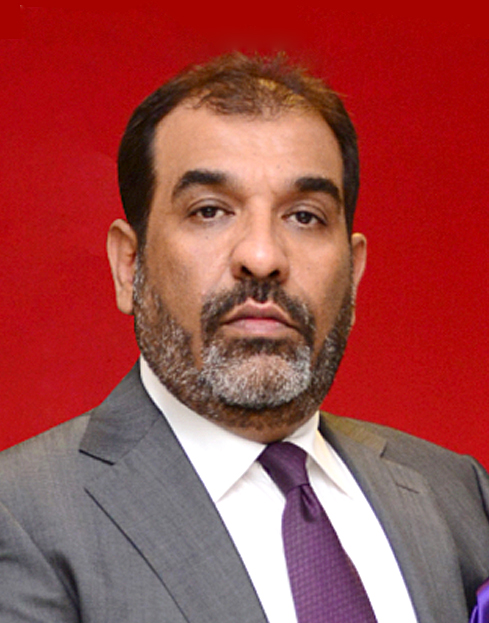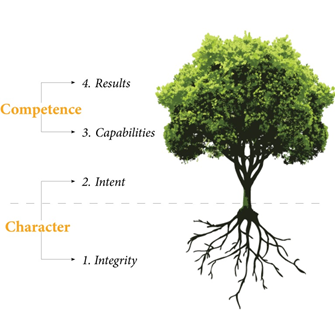Lavleen Raheja is the Chairman and CEO of FranklinCovey India and South Asia since its inception in 2002. He has an experience of 25 years with premier organizations and a wide range of leadership groups across diverse industries, including Automobiles, Retail, Banking, Consulting, Telecom, BPO and IT. In this interview, he talks about his latest book “The Ultimate Competitive Advantage”, co-authored with Shawn D. Moon and Sue Dathe-Douglass that argues that people are the key to successful organizations.
What is the “The Ultimate Competitive Advantage” and how would you articulate the central thesis in this book?
Over the years, our research has shown that there are a lot of fallacies in how companies understand what their key differentiator is. Some companies call their IT and systems as their key, some others talk about their mission or vision. But the ultimate competitive advantage is people. It is people who are talented and passionate workers that are the key to unlocking a company’s unique potential to standout in the chaotic market. This is what the book explores – why, how and what organizations should do to drive their people practices.
At the heart of this book are six people practices that organizations need to engage in. They need to lead with purpose – it is important that organizations find the voice of their team and align with the mission. Companies need to execute with excellence by focusing on the important goals while creating accountability. Companies also need to unleash productivity, inspire trust, build a legacy of sales leadership and create intense loyalty. So the book dives into each of the practices to show how organizations can leverage their people.
To whom would you say the book is addressed to?
The book is addressed to all leaders – whether they are emerging leaders or they are at the top already. The book is, in some ways, a daily ritual; it is something that one has to keep returning to. It helps leaders align their principles and it enables them to further align others.
The book has an interesting format. It’s designed in a manner that is like a workbook. Why is that?
The format is the advantage of this book. It is not preachy in its style. For us, the main emphasis was on making the book relevant and practical – that’s why it has the features that encourage the reader to introspect and work for themselves. It gives them tools to work with– it is this knowledge and skills that would be required for people to implement some of the ideas in the book.
The tools are a combination of technology and people practices. It is focused on lead measures and not lag indicators. Take the example of a person who wants to lose weight – the lag measure is ultimately the weight lost. But the lead indicators are “What is your intake of calories, proteins, and carbohydrates?”, “What kind of exercise do you do?” There is a whole website that is connected to the book www.franklincoveysouthasia.com/uca and there are case studies and behavioral tools, team development tools and strategy implementation tools.
There is an emphasis on co-creating the purpose. Why is it important to co-create? How can established organizations engage in such an exercise?
An organization is not very different from an individual, and if you look at an individual’s mission - it evolves over time. My own thinking has evolved from the time I was a bachelor, to when I got a job, when I got married and had children and once I had my own organization. The mission is never permanent, what is permanent are the principles that surround the mission, what we call values. Some of the things that we at Franklin Covey seek to live by are compassion, integrity and respect.
Co-creating the purpose ensures that there is meaningful engagement. The hotel Ritz Carlton has a credo that reads: “we are ladies and gentlemen, serving ladies and gentlemen”. If you think about it, it’s a simple and yet powerful way to articulate how they value themselves and how much they value others as they move ahead.
Recently, we worked with a large bank on a ‘co-missioning’ exercise. We did extensive research, then we formed projects, groups and then there were questionnaires designed for all the employees. The data was collected across different levels. And finally, the organization’s mission was ratified. It is a mammoth exercise.
The book notes that modern work culture encourages employees to ‘work hard and crash’ – what can we do about this?
Today everything is connected to growth and this is a problem. I personally feel that anything more than 15 percent CAGR (Compounded Annual Growth Rate) is not good for any team. And so companies today are turning to innovative solutions to tackle stress. A leading FMCG company in India has what is called as a “quiet hour” – in that one hour, no one takes any calls or talks to anyone and so people just concentrate on their work. Leading technology companies are engaging their employees with a variety of initiatives and activities that de-stress the workplace.
One of the key practices is to build a sales culture. How is the sales culture instrumental to a leader?
Sales departments are extremely dynamic. They deal with multiple levels of complexity and these situations often come to them unannounced. They often don’t know how people will react to a certain situation – they also have to interact with a wide variety of clients and each time they have to pitch differently. In order to be an effective sales person one has to listen empathically, understand what the client’s needs are and create win-win partnerships. Successful business development is a balance between advocacy and inquiry – that means taking the time to drive insightful conversations that create a high degree of mutual understanding. We believe that it is not sales people who make the difference but a sales culture. And an effective leader is someone who is not only trustworthy but someone who creates deep loyalty among employees, customers, and different extended communities.
Were there any findings that surprised you in the course of the research for this book?
Since we had a set mindset about what we wanted to study, there were not many surprises per se. There were many case studies that we studied that were relevant to the Indian context that we have incorporated in the book. The case studies from non-profit organizations and schools were also interesting to us since we haven’t extensively worked with them in the past. Take the case of dabbawalas of Mumbai, their work process is extensively documented and studied – the reason why they work so well is because their process is simple, visible and consistent. And it is worth asking whether the processes in companies today are actually simple, visible and consistent? The level of transparency and reliability created is critical. Because in the end, people will never engage with the mission if it is perceived as meaningless corporate speak.


 Comments
Comments





Leave A Comments